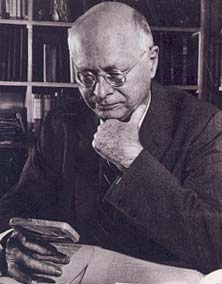Image Details

A closer look. William F. Albright, the preeminent American Bible scholar during the mid-20th century, examines scriptural texts through a magnifying glass, scrutinizing the words in his search for any history they might reveal. Albright and his colleagues believed that they could correlate archaeological evidence with the narratives of the patriarchs—Abraham, Isaac and Jacob. The Albrightean synthesis, as it became known, found a place (Mesopotamia) and a time (the early second millennium B.C.E.) into which the patriarchal narratives seemed to fit. Starting in the 1970s, however, this view came under increasing attack. Today a debate rages between “minimalists” and “maximalists” over the question of how much history the Bible contains. Philip Davies, in the accompanying article, outlines the position of each camp and argues that the two are not as far apart as they might at first seem.
